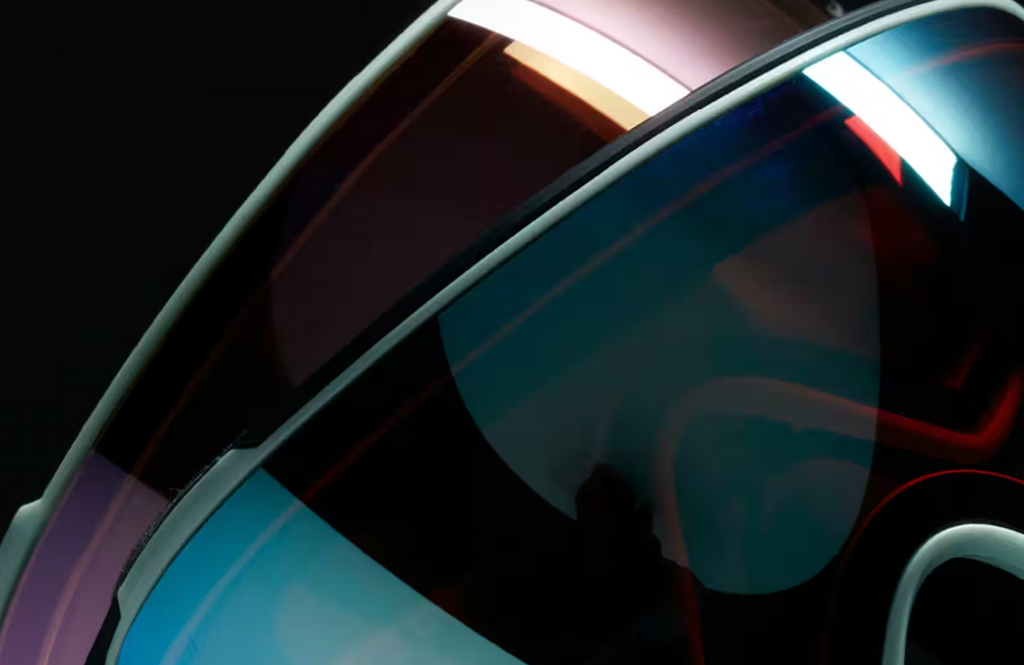Snowboard Goggle Lenses Explained
Most snowboard goggles are available in different shapes and sizes as well as different tint options. A pair of snow goggles is made up of three main components: the frame, the lens, and the strap. The lens is what protects your eyes and face from precipitation and weather and is arguably the most important part of goggles. The frame is what holds the lens in place and provides ventilation to prevent the lens from fogging up. It should fit your face comfortably without any pressure points and rest snugly against your helmet to keep out the elements. The strap is what holds the goggle frame in place on your head.

LENS SHAPES
Cylindrical (Flat) Lens Goggles
The surface of cylindrical lenses is curved on the horizontal axis only, wrapping securely around the face while remaining flat vertically. Cylindrical lenses have a more retro aesthetic and are often preferred specifically for their style. Cylindrical lenses can sit slightly closer to the face, allowing them to provide a large field of view with a smaller over-all goggle profile.
Spherical Lens Goggles
Spherical lenses have a convex shape that curves on both a horizontal and vertical axis, almost like a bubble that frames the upper portion of the face. With improvements in manufacturing, spherical lens goggles have significantly improved in quality and affordability to become the gold standard for skiing and snowboarding. Spherical lenses provide a wide over-all field of view with very little optical distortion. The shape of spherical lenses provide a more equal distance between the eyes and the lens, regardless of the direction the wearer looks, which can help reduce eye fatigue during extended periods of use.
LENS TINTS & FINISH
There are literally hundreds of different colors and tints when it comes to all of the goggle lens options on the market. So, to simplify this process, the industry has adopted a standardized measurement called Visual Light Transmission, or VLT. The amount of light that a specific goggle lens allows to pass through it is measured with a number called Visible Light Transmission, or VLT. Every high-quality goggle lens on the market has a specified VLT rating between 1 and 100 that is usually indicated as a percentage. The lower the VLT rating, the darker the tint (less light passing through to your eyes); the higher the VLT rating, the lighter the tint (more light passing through to your eyes).
Choose the right tint based on the light conditions you are riding. In some cases its best to have a couple options to swap around to cater for changing conditions
Sunny Days - VLT Rating 5%-20% (S3 AND S4 in some brands)
Partly Cloudy Days - VLT Rating 20% to 60% (S2 in some brands)
Cloudy Low Light Days - 60%-90% (S0 AND S1 in some brands)
The color of a goggle lens is often related to its tint, in that lower VLT lenses are usually a darker color. Also, goggle lenses that are intended for bright light use may include a mirrored finish to reflect light, reduce glare, and decrease eye fatigue in sunny conditions.





